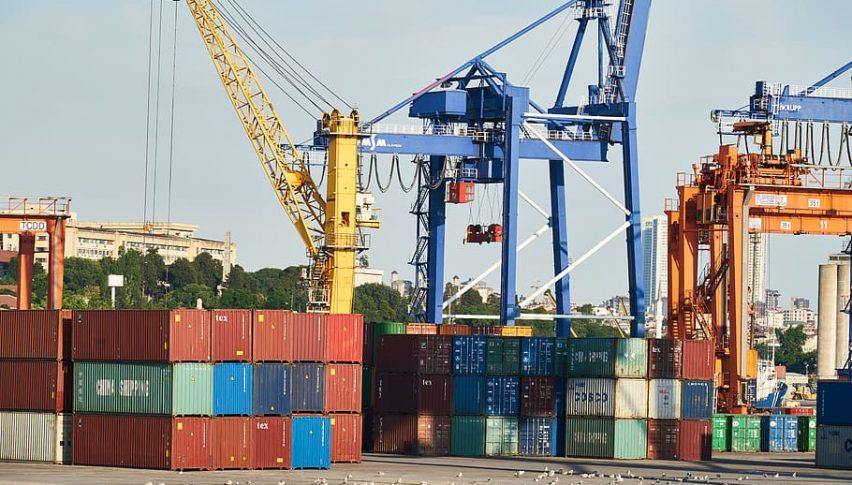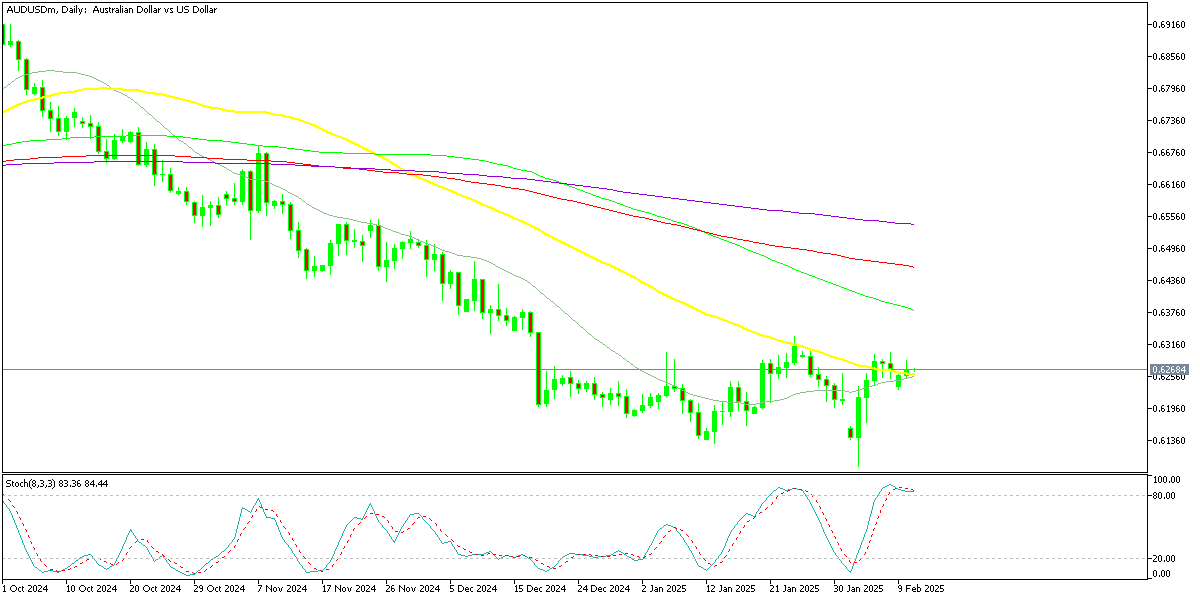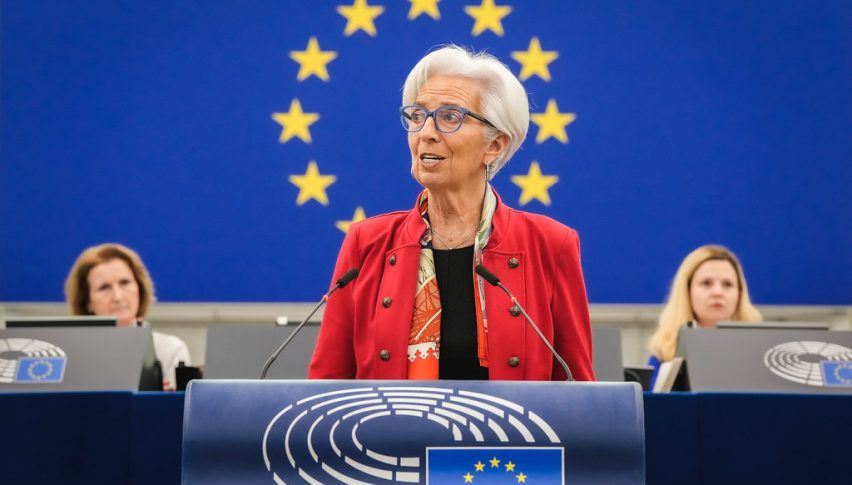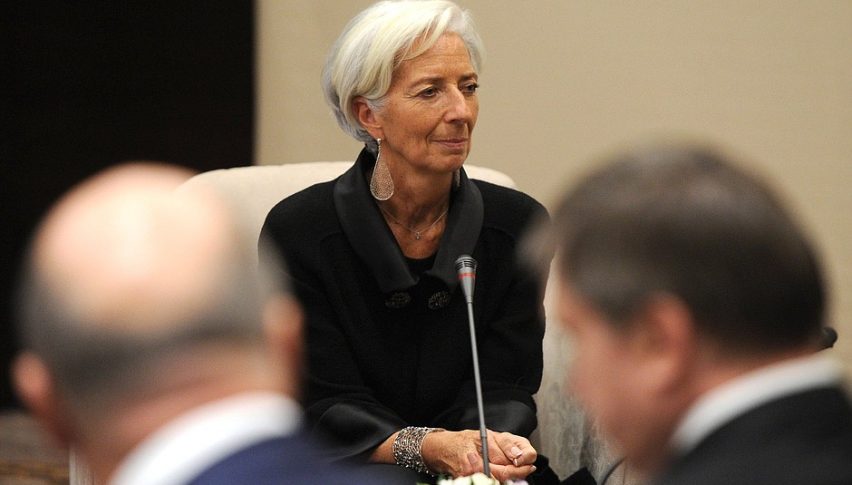AUDUSD to Head Below 0.60 If No Exemption on Australia from Trump Tariffs
AUD/USD lost 10 cents in Q4 of 2024 but found support above 0.60, while now it is waiting at 0.63 to see if tariffs on Australia are...

Live AUD/USD Chart
AUD/USD lost 8.5 cents in Q4 of 2024 but found support above 0.60, while now it is waiting at 0.63 to see if tariffs on Australia will be applied in full.

After the fall from below 0.70 to above 0.61 in several months, AUD/USD has been consolidating in 2-cent range in 2025 so far, with buyers having difficulty pushing the price above 0.63. That suggests that the downtrend will likely resume soon, especially if tariffs on Australian Steel and Aluminium materialize.
Trump announced plans to implement a 25% tariff on steel and aluminum, with the official signing expected today and tomorrow, though the measures may take effect at a later date. The AUD/USD remained stable after an initial dip, likely reacting to earlier developments rather than the tariff announcement itself.
AUD/USD Chart Daily – Buyers Can’t Push Above 0.63
Meanwhile, the USD showed early signs of strength, inching higher following the news. Before the tariff decision was confirmed, reports surfaced that Trump and Australian Prime Minister Albanese had discussed the possibility of exempting Australian steel from the duties, though no official decision has been made.
Key Takeaways from Trump’s Tariff Announcements
- No Exceptions, No Exemptions – The tariff policy will apply across the board without special considerations.
- Potential Expansion – Trump is also considering tariffs on automobiles, semiconductors, and pharmaceuticals.
- Retaliation Not a Concern – The administration is unmoved by potential countermeasures from other nations.
Steel & Aluminum Tariff Adjustments
- Aluminum tariffs raised from 10% to 25%.
- Steel tariffs reinstated at 25% for all importing countries.
- Industry under pressure – U.S. steel capacity utilization has dropped from the targeted 80% to nearly 70%.
- New manufacturing standards introduced:
- ‘Melt and pour’ for steel in North America.
- ‘Smelt and cast’ for aluminum to ensure traceability.
- Tariff expansion – Downstream steel and aluminum products will also face tariffs.
- End of exemptions – The product exclusion process will be discontinued, applying tariffs more broadly.
Strategic & Economic Reasons
- Leveling the playing field – Tariffs aim to support American producers and prevent market distortions from foreign subsidies.
- Enhanced enforcement – Customs officials instructed to crack down on misclassification of steel and aluminum imports.
- National security concerns – Trade adviser Peter Navarro emphasized that the tariffs reduce reliance on foreign suppliers for critical industries.
- Boosting domestic production – The policy is intended to end foreign dumping, increase U.S. manufacturing, and solidify steel and aluminum as pillars of economic and national security.
Trump’s tariff measures signal a strong protectionist stance, prioritizing domestic industry resilience over global trade diplomacy. With strict enforcement, expanded scope, and no exemptions, the policy aims to fortify the U.S. steel and aluminum sectors, even at the risk of trade disputes. Markets will closely watch global reactions and potential retaliatory actions in the coming weeks, but this goes in favour of the USD.
Westpac Monthly Survey – February Consumer Sentiment (Australia)
Key Highlights
- Consumer sentiment edged up by 0.1% in February, reaching 92.2 points.
- January sentiment had declined by 0.7%, settling at 92.1 points.
Despite a modest uptick in sentiment, Australian consumers remain cautious, reflecting persistent economic pressures. While inflation and interest rate expectations continue to shape sentiment, any significant improvement may require clearer signals of monetary easing or stronger wage growth. The upcoming RBA decisions and economic data will be key drivers in shaping consumer confidence moving forward.
AUD/USD Live Chart
- Check out our free forex signals
- Follow the top economic events on FX Leaders economic calendar
- Trade better, discover more Forex Trading Strategies
- Open a FREE Trading Account





